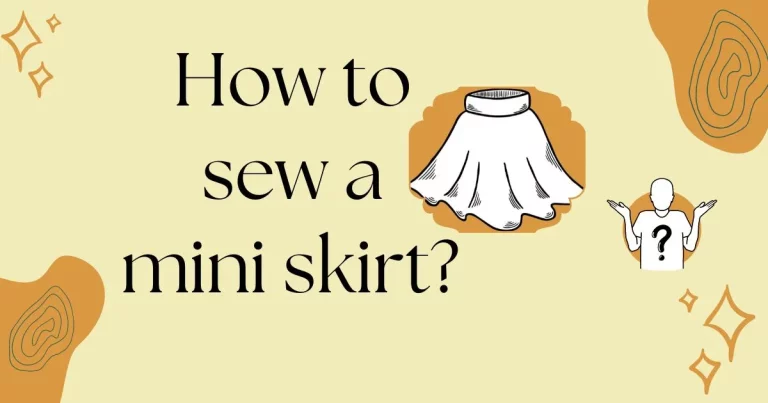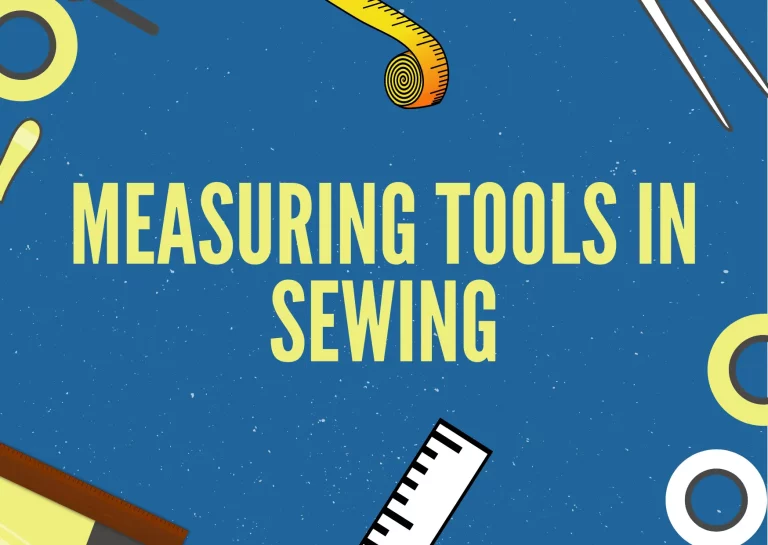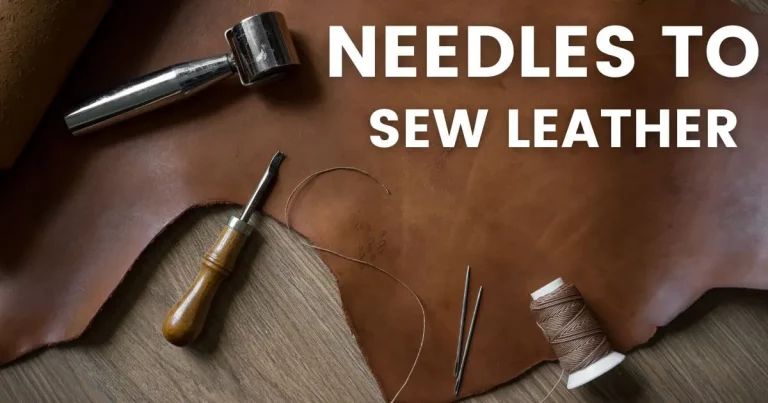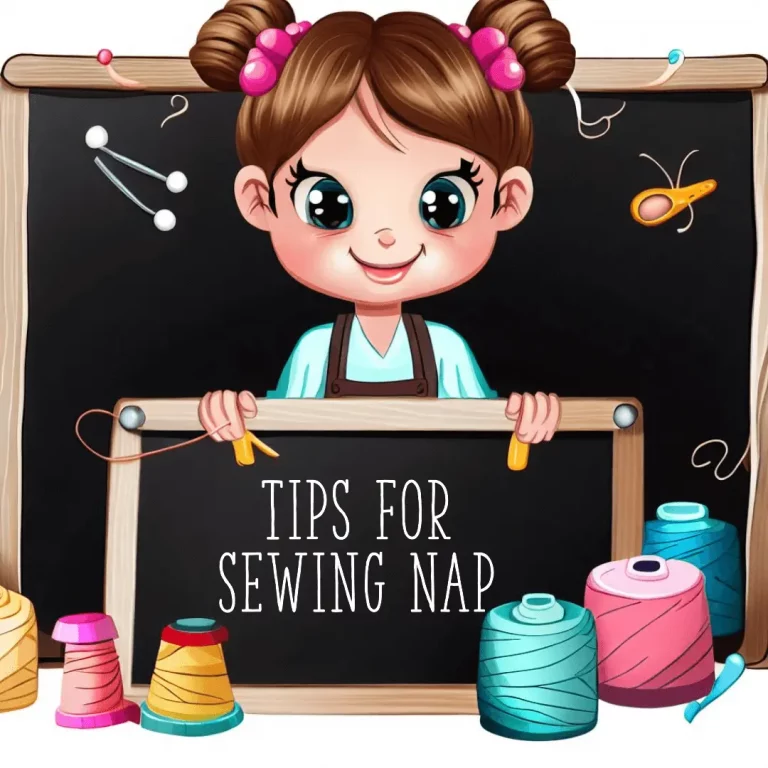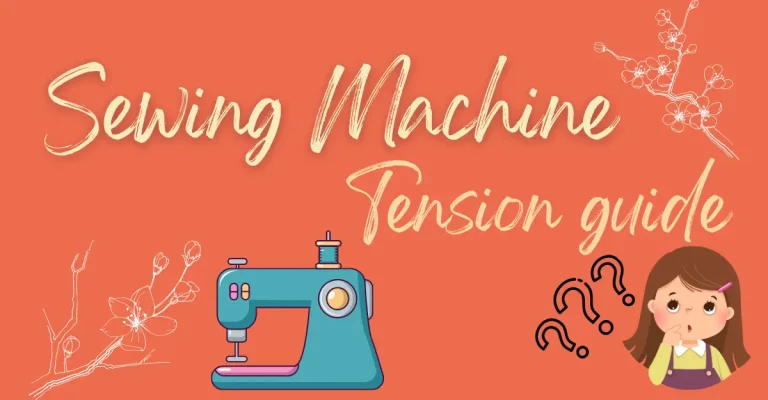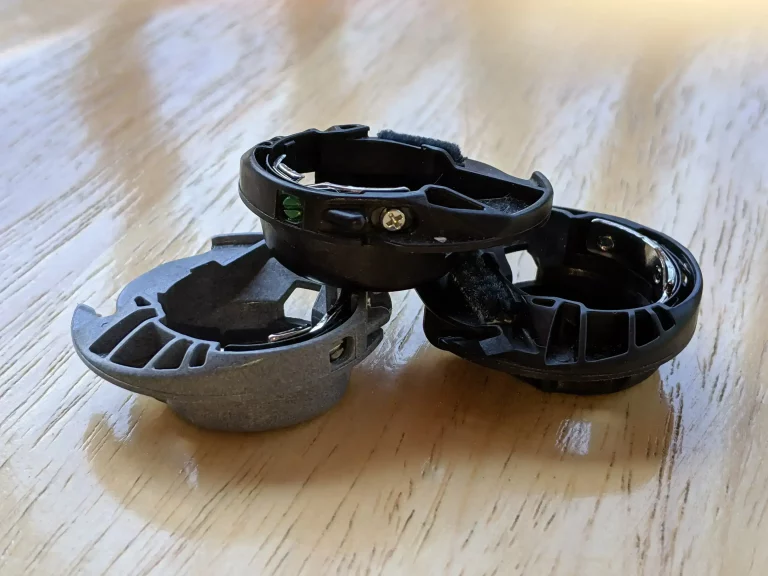WHAT ARE NOTCHES IN SEWING: ULTIMATE GUIDE (WITH PICTURES)
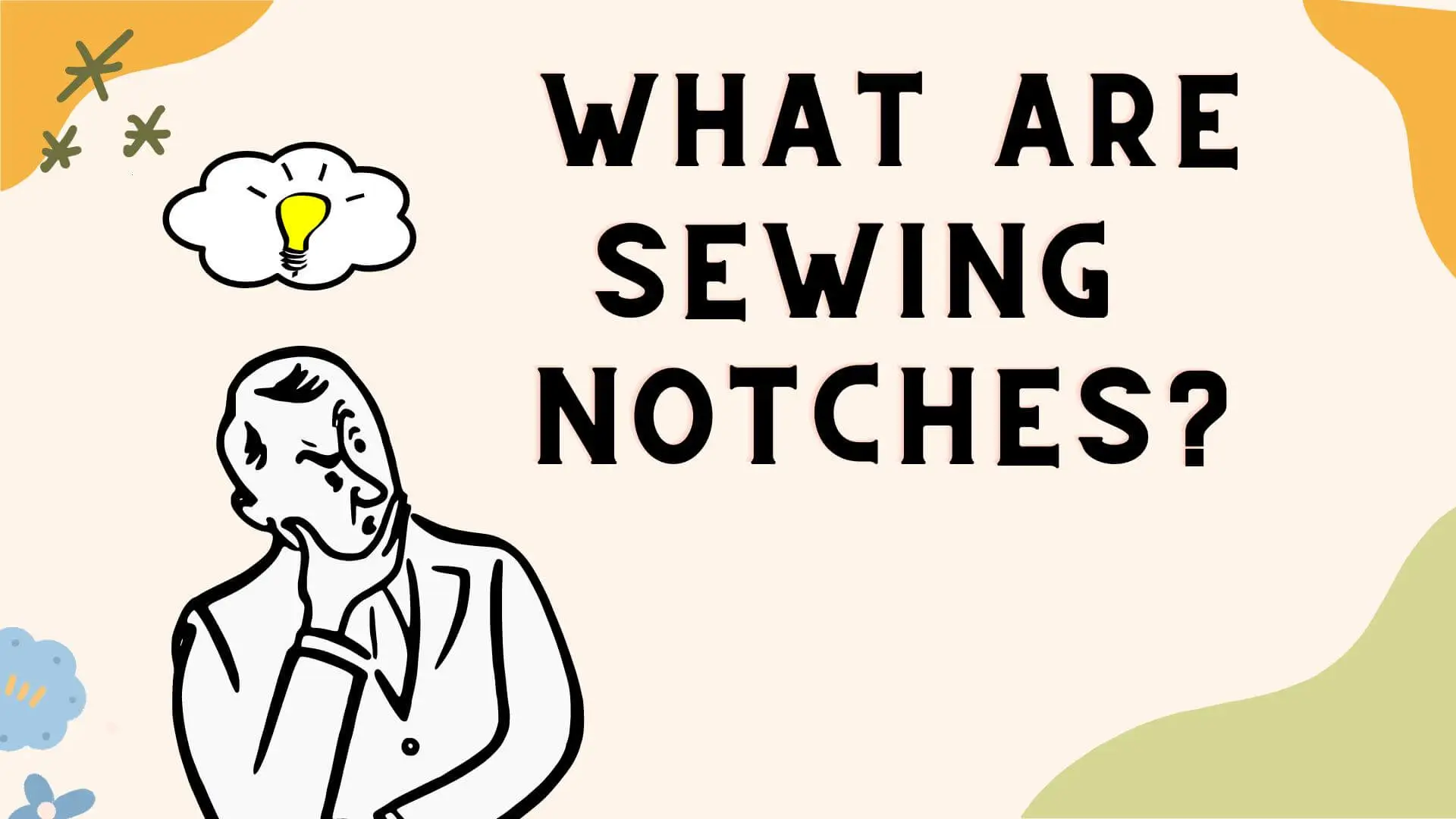
Did you ever wonder about what are notches in sewing? Exactness, correctness, and close attention to detail are vital in the craft of sewing. Little triangular or diamond-shaped small markings called notches are used in sewing to precisely align various fabric pieces together. Notches act as a sewing guide and aid in achieving the ideal fit for the garment. They are sort of the unseen sewing angels because they facilitate and speed up the stitching process.
We will discuss notches in sewing, their various sorts, and how to use them to improve your sewing abilities in this post.
What are Notches in Sewing?
For correct alignment of various pieces of fabric, little markings called notches are put on the margins of pattern pieces. They are typically positioned on the seam allowance of the pattern piece and take the form of a triangle or a diamond. When sewing together the various components of the garment, notches are utilized as a guide to align the parts. They aid in making sure the clothing is comfortable to wear and that it fits properly for wear.
What tools are required for cutting notches?
Sewing requires cutting notches, and there are a number of equipment that may be used to make the operation quicker and more accurate. The following are some of the most typical instruments for cutting notches:
Scissors
To cut notches, a great set of accurate cloth scissors is necessary. To keep them sharp and prevent them from becoming dull from cutting other materials, it is crucial to have a separate set of scissors just for cutting fabric.
Rotary cutter
When cutting notches, a rotary cutter is a fantastic tool, especially when working with numerous layers of cloth. It enables you to simultaneously cut through many layers of cloth, which can speed up the process and guarantee that all of the notches are the same size and shape.
Notcher tool
A specialist device made especially for creating notches in fabric is a notcher tool. It resembles a puncher, but instead of creating a hole in the fabric, it makes a little notch. It’s crucial to pick the right notch tool for the size of notch you require because they come in a variety of sizes and forms.
Tools for marking
To mark the placement of your notches, you will also require marking equipment in along with the cutting tools. They can be basic pins or needles, cloth labeling pens or pencils or it may be a tailor’s chalk.
Template or measuring ruler
Using a ruler or template to mark the placement of your notches before cutting might be helpful if you want to make sure that they are regular in size and shape. This will make it easier to be certain that all notches have an identical size and are positioned correctly.
Just by using these simple tools making precise and uniform notches in sewing will become more easier for you.
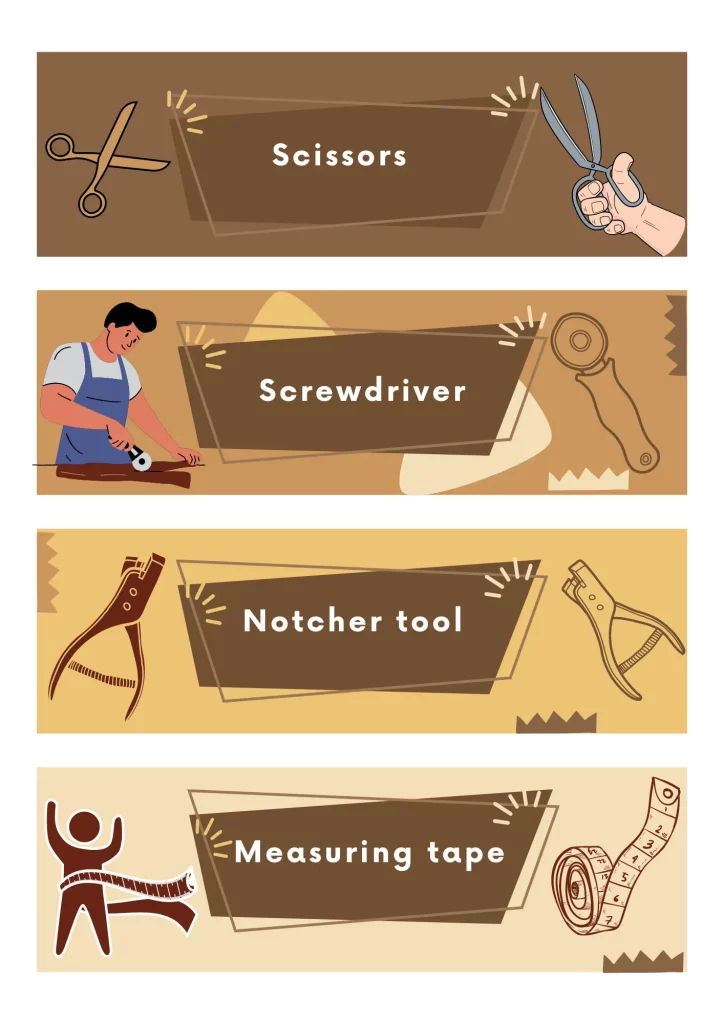
Types of Notches
There are different types of notches in sewing that are used. The most commonly used notches are as under:
Single Notch
Just on margin of the pattern piece, a single marking in the form of a triangle or a diamond is formed. It is known as a single notch. It serves as a marker for the location of a certain seam or corner.
In sewing, a single notch is a tiny mark in the form of a triangular shape or diamond that aids in precisely matching the seams of your garment. It is located on the pattern piece’s border and indicates where to place your seams or corners. It’s a basic technique, but it might be the distinction between a poorly fitting clothing and one you’ll like wearing.
Simply align a Single Notch with the appropriate notch on the piece of cloth next to it, and you’re ready to stitch. You may consistently check that your seam and edges are in the proper location by using this small reference point. Although it’s a minor point, you’ll ultimately save a lot of time and irritation by paying attention to it. Don’t overlook the Single Notch’s potential the next time you’re sewing since it simply might be the secret to your sewing success.
Double Notch
Just on margin of the pattern piece that is cut, there are two markings made in the shape of triangle or a diamond. It aids in distinguishing between two similar examples.
A double notch is a sewing technique that consists of two tiny notches in the form of a triangle or a diamond. They have two crucial functions and are located on the border of your pattern piece. Similar to a single notch, they start by demonstrating where to place a particular seam or corner. They can also be used to distinguish two pieces of fabric that are similar, which is its secondary purpose.
A Double Notch can be used just as easily as sewing a Single Notch. Just align the notches on each fabric piece to make sure everything is completely straight. Also, even if two pieces of fabric appear to be identical, you can be certain that you are working with the correct one because there are two notches. Don’t neglect to use those Double Notches the next time you’re sewing because it’s a small touch that may make a huge difference in your products!
Triple Notch
This is three triangles or diamond shape patterns that are cut on the border of the design part. It is used to show the location of a specific layer or corner and also helps in distinguishing between three similar pieces.
The notches in sewing are a representation of accuracy and close attention to detail in the sewing industry. You are demonstrating your dedication to making a flawlessly fitting clothing that looks and feels fantastic by utilising this marking technique. The notch’s effectiveness could therefore be the secret to your sewing success the next time you’re working on a project.
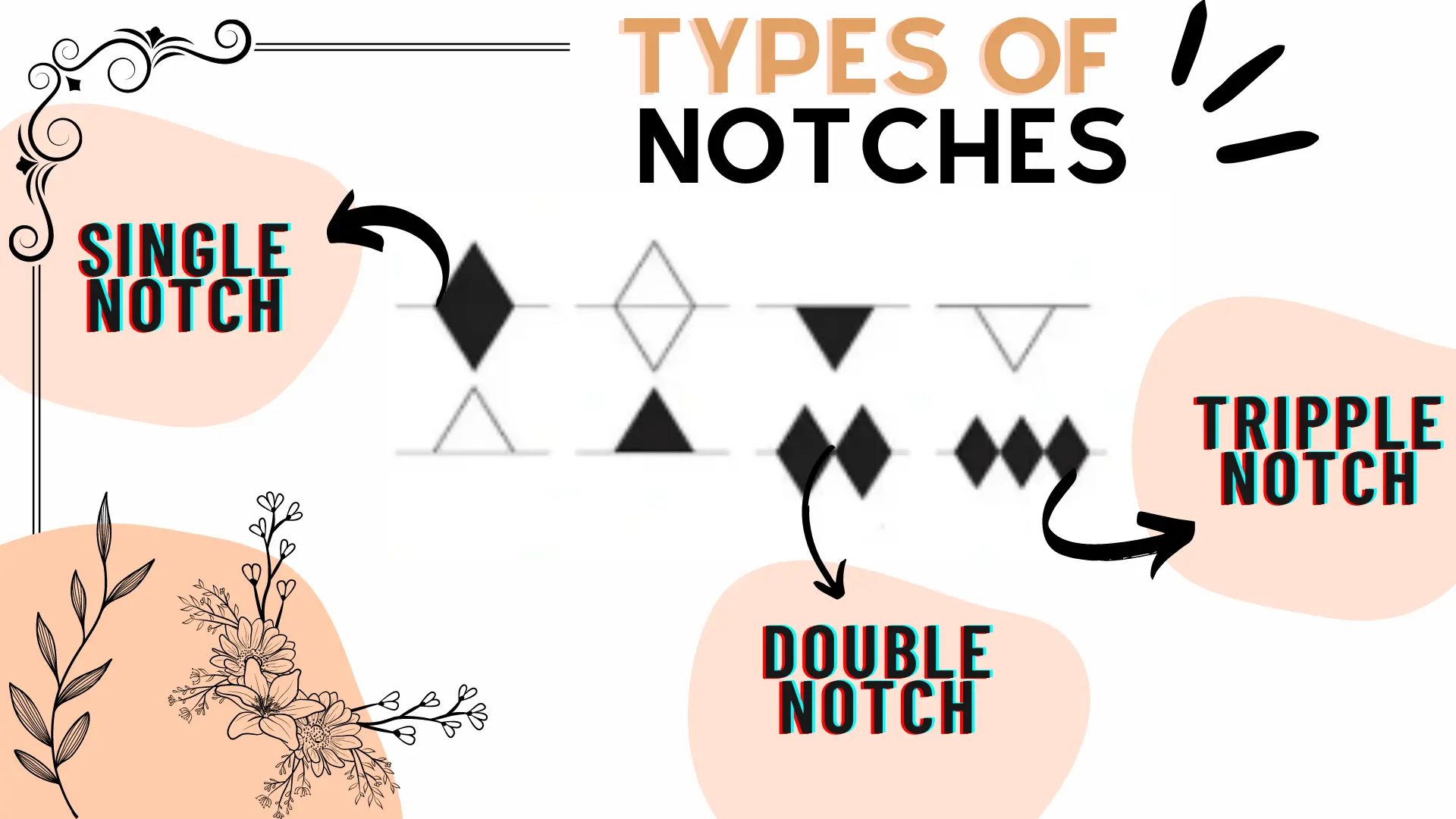
How to Use Notches in Sewing?
Notches in sewing can be used in various ways to enhance your sewing skills. Here are some of the ways you can use notches in sewing:
Orientation
Notches in sewing are used to ensure alignment in numerous textile pieces together. To use notches for synchronization, connect the notches on one pattern piece with the matching notches on the next pattern piece. Sew the fabric pieces together across the seam line to guarantee that the notches are lined. As you stitch the parts together, take out the pins.
Distinction
To distinguish between identical pieces of fabric, notches are employed. Use notches to distinguish which fabric pieces fit together when working with several pieces that have a similar appearance. Align the notch on one piece of fabric with the notch on the piece of fabric next to it. By doing so, confusion will be reduced and the garment’s construction will be right.
Read about Naps in sewing by clicking on the link.
Identifying
On the fabric, notches can be utilised to identify particular locations. For instance, you can designate the location of a button with a single notch or a pocket with two notches.
In conclusion, sewing notches are a crucial technique you can use to improve your sewing abilities. They aid in making sure the clothing is comfortable to wear and that it fits properly. You can make an item that is both functional and fashionable by employing notches for alignment, differentiation, and marking. Thus, keep notches in mind when you start a sewing project in the future.
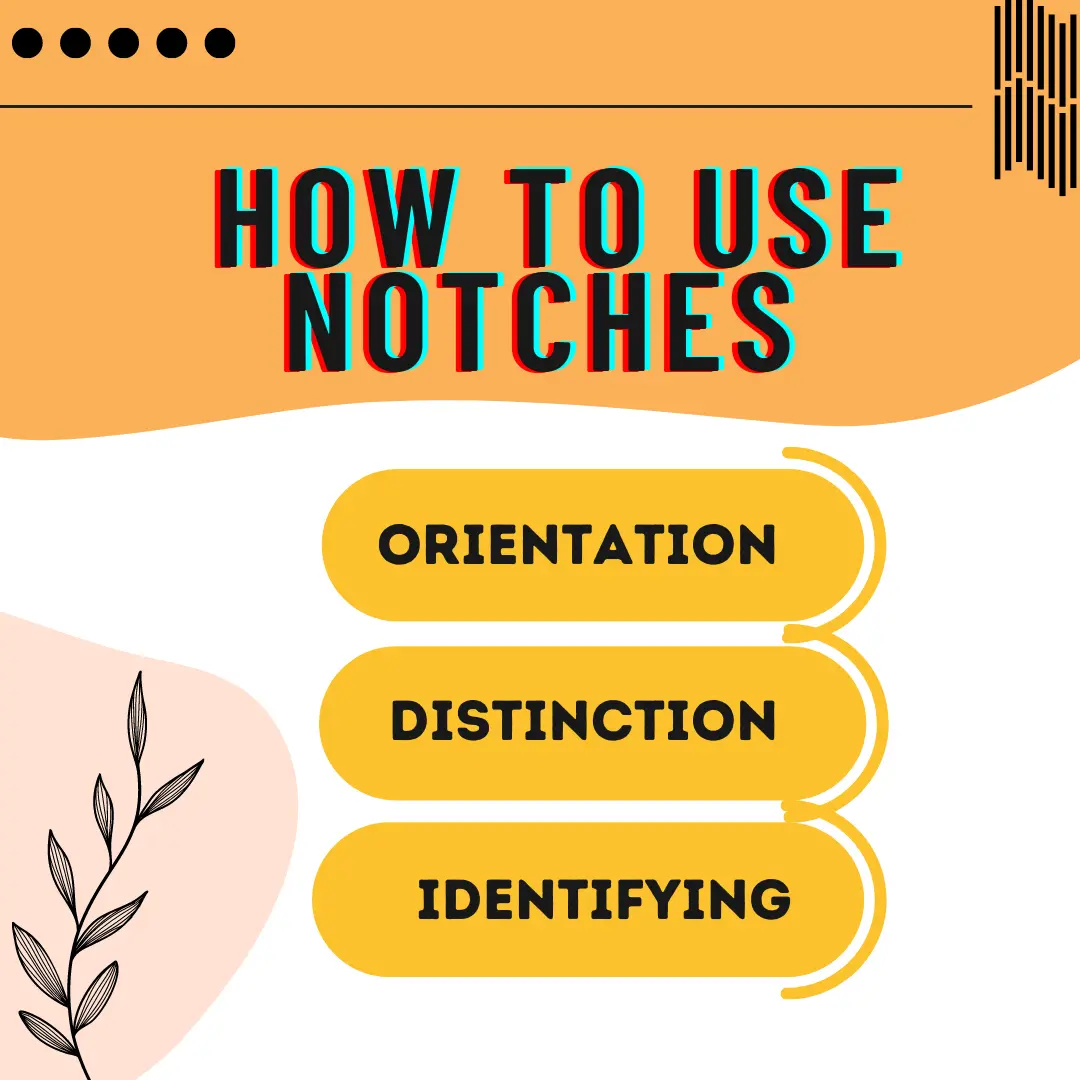
What are the uses of notches in various parts of garment?
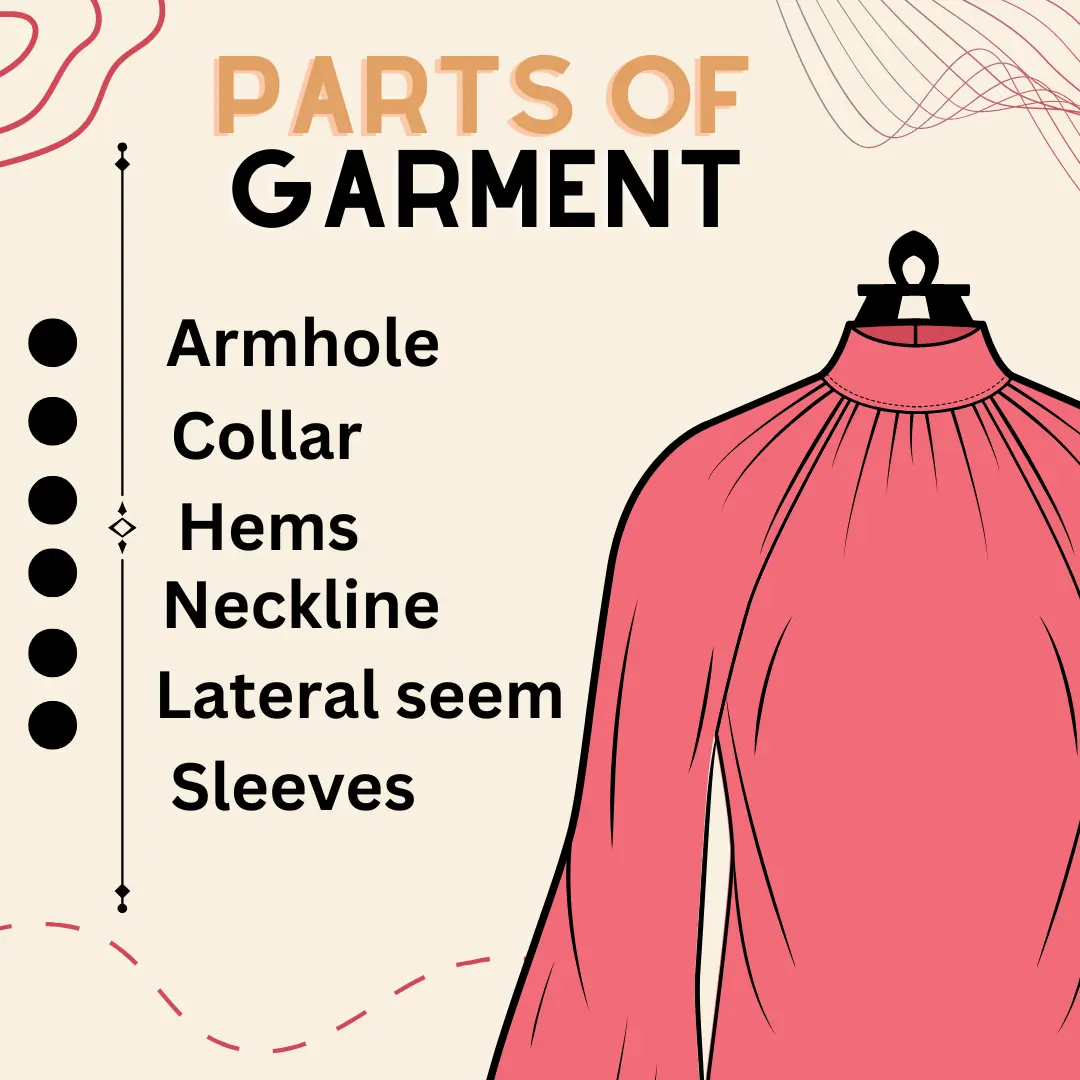
In a sewing pattern, notches are useful for pointing out where certain seams, corners, or balance points should be placed. Here are some examples of how notches might be useful on various areas of a garment:
Armhole
To show where the seams of the bodice and sleeve should line up, notches are frequently positioned at the shoulder seam and underarm seam on an armhole. This helps to guarantee that the sleeve is joined without difficulty and that the armhole doesn’t pucker or tuck.
Centre back and center front seams
In sewing, notches are positioned on the center back and center front stitches to show where the bodice parts should be matched together. This guarantees the bodice’s symmetry and the uniform’s straight hanging.
Collar
To show where to align the collar with the neckline, collar notches are positioned on the collar and collar stand. By doing this, you can make sure the collar is fastened evenly and the neckline is flat.
Hems
To show where to fold up the hem, hem notches are frequently sewn onto a garment’s hemline. This guarantees a straight and even hem.
Neckline
To show where to align the collar or facing, notches are frequently sewn into the front and rear centres of the neckline. By doing this, you can make sure the neckline is nice and lays flat.
Lateral seam
To show where the bodice and skirt or pant pieces should fit up, notches are sewn into the side seams of clothing. This guarantees that the garment drapes straight and that the side seams are free of puckers and tucks.
Sleeves
To show where to slip the sleeve into the armhole, sleeves frequently include notches at the front and rear of the sleeve cap. This guarantees a smooth sleeve attachment and prevents puckers or tucks in the sleeve cap.
Stylelines
To show where to align the pattern pieces, stylelines or other design elements in a garment may also be given notches. This guarantees the symmetry of the design elements and the appearance of the garment sophisticated and specialized.
Ultimately, notches are crucial to a garment’s professional appearance and proper construction. They are a crucial sewing tool that improve the accuracy and efficiency of the stitching process.
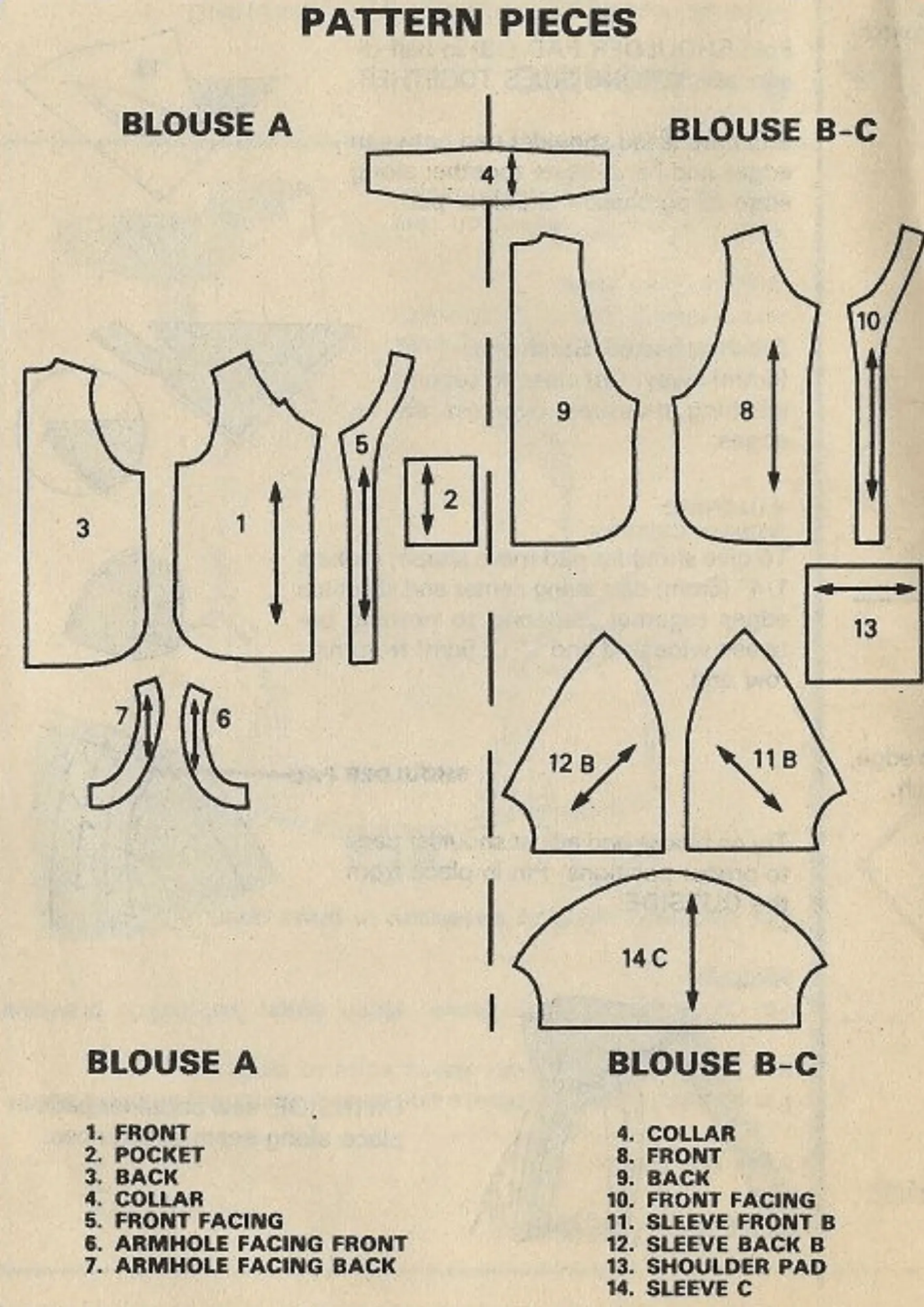
Many styles of notches in sewing
Square notch
A square-shaped marker known as a “square notch” is used to designate where a seam or corner should be located. It is frequently combined with various kinds of notches.
Slashed Notch
This is a little slit cut into the fabric at one particular location to show where a seam or corner should go.
Inward triangular notch
A small triangle shape pointed towards the center of the garment is cut into the seam allowance of a pattern piece to form an inward-cut triangle notch. This kind of notch allows the cloth to lay smoothly when stitched, hence it is frequently used in curved seams or for fabric with a lot of drape.
Outward triangular notch
On the other hand, outward-cut triangle notches are made by slicing a tiny triangle into a pattern piece’s seam allowance that points away from the centre of the garment. This kind of notch is frequently used in straight seams or with more rigid fabrics because it makes the fabric lay flat and prevents puckering or bunching.
The positioning of a certain seam or corner is indicated by notches of all designs. On the other hand, how the notch is cut can significantly affect how the fabric lays and responds to sewing. To make sure that your garment fits and looks its best, it’s crucial to carefully follow the directions on your pattern and use the right kind of notch for each seam.
The sorts of notches discussed above are only a few of the numerous others that can be utilised in stitching. You may select the optimum notch for your fabric and sewing project to produce a polished and professional outcome by being aware of the advantages of each style.
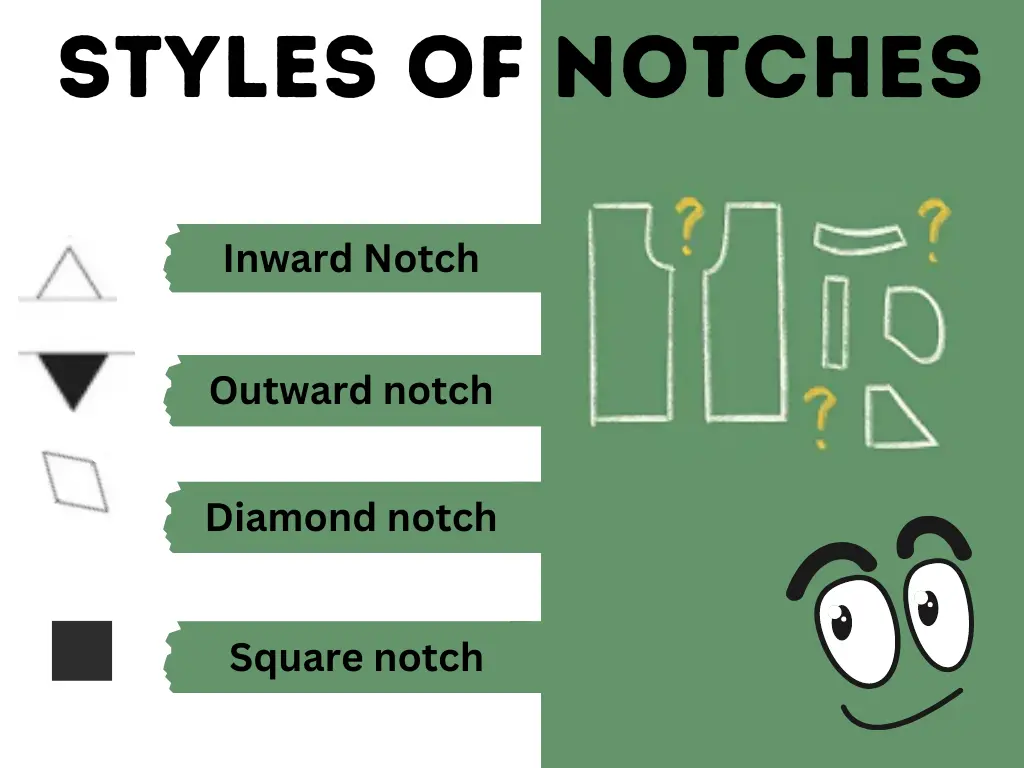
Conclusion – Notches in sewing
In conclusion, perfecting the art of sewing notches is a definite method to step up your sewing game. The fit and quality of your clothes can be greatly improved by these minute but crucial markings. Your designs will stand out from the crowd if you use notches in your sewing technique to achieve a polished and expert appearance. Therefore don’t be hesitant to harness the power of notches and advance your sewing abilities!

